Paris: The Bells, Bells, Bells Edition

Glowing like an over-sized Lucite jewelry box Photos by Theadora Brack (Music Sheets: T. Brack’s archives)

My Sweetheart Is Somewhere In France, Mary Earl, 1917, Shapiro, Bernstein Co. Cover illustration by William Austin Starmer and Frederick Waite Starmer
By Theadora Brack
In the words of the late, great songwriter, Theodora Morse, “Hail! Hail! The gang’s all here!” This week, let’s salute music and Remembrance Day. Up my sleeve, I have a few favorite patriotic music sheets, recently scored at the flea markets. We’ll also pay homage to the Tin Pan Alley music publishers, songwriters, and artists. So strike up the band!
Trekking to Paris?
Don’t miss the Cathédrale Notre Dame’s great organ. Earlier this year, after an intensive and much needed 10-month supreme makeover, the organ kicked-off the festivities for the cathedral’s recent 850th anniversary. Music to my ears. Listen: All 8,000 pipes (some dating back to the 18th century) were individually cleaned, and a new electronic panel with five cascading keyboards and some 200 stops were installed. Boom. Boom. Boom. Can you hear me now?
The Bells of Notre Dame
Calling Quasimodo! Meet your new bells: Jean-Marie, Maurice, Benoit-Joseph, Steven, Marcel, Dennis, Anne-Geneviève and Gabriel, along with six-ton Marie. Using medieval techniques, they were cast at the Cornille Havard Bell Foundry in Normandy. (Marie was made in the Netherlands.) As part of cathedral’s birthday fête, the shiny newbies replaced Napoleon’s 19th century bells: Angélique-Françoise, Antoinette-Charlotte, Hyacinthe-Jeanne and Denise-David.
“Bells are like human beings. They live and, one day, they fade,” said one of the “campanologues” (bell experts) involved. Sunny side: The oldest Bourbon bell (13-ton Emmanuel) survived the French Revolution and the recent turnover. Without fail, since 1856, the bells of Notre Dame have rung every 15 minutes. They also rang to mark the end of World War I and the liberation of Paris in 1944.
Clipping from The New York Times in 1875: The people in the abbeys, cities, towns, and hamlets loved their bells and listened to them on holidays, as people nowadays listen to an opera. They could understand the language of the bells in its many cadences; and when the clanging was heard as a war-alarm, they were stirred as with the sound of a trumpet, and could feel something like Victor Hugo’s Quasimodo, the Hunchback who falls into such a frenzy among the clanging monsters in the belfry of Notre Dame.
People were always willing to fight for their bells, and just as ready to seize those of other people in their military excursions. Bells played high parts in war as well as peace. When the King of France came to attack Millau, in its days of burgher independence, the Archbishop of the city cried out: “Let him sound his trumpets! I will ring my bells!”
The Music Man
Leo Feist would have agreed with the Archbishop! “There isn’t anything in the world that will raise a soldier’s spirits like a good, catchy marching tune,” wrote the music publisher. “Music Will Win The War!” was his mantra. Yes, Feist wore his flag on his “sheets.”
Winding it back: During “La Grande Guerre” (a.k.a. La Première Guerre Mondiale, or World War I), Feist published a pocket-sized “Songs the Soldiers and Sailors Sing” for the masses. At fifteen cents a pop, the 80-page collection was affordable, patriotic, and catchy. It included now-famous titles like “K-K-Katy,” “Over There,” and “Hail, Hail, the Gang’s All Here.” The booklets, along with individual song sheets, were sold in five-and-dimes and department stores. Folks were encouraged to sing the patriotic songs at home, in theaters, and at Liberty Bond rallies.
In full-page advertisements, Feist sounded his trumpet and bells like no other: Our boys on the fields of France, our sailors on the big, gray sea-fighters, and the boys in our training-camps are singing them! The whole country is singing them and dancing to their inspiring melodies! Being sung to tremendous applause in thousands of theatres throughout the land! Try over the choruses and you will know why. Don’t wait until you hear everybody singing them—get copies of all four of these songs now and be the first to sing them. They can’t stop our singing army!
Interested in Notre Dame’s bells? Grab your cloche hat and follow this link to our chum Paris Paul Prescott’s “Paris by Cellphone” site! Then, stop by his new site: “Our Ladies: The Churches and Miracles of Paris.” Paul’s photographs are gorgeous!

On that day the air was so fresh and clear that Quasimodo felt his affection for his bells returning. Clapping his hands, he ran to and fro from one rope to another, awakening his six songsters by this voice and his gestures, as a maestro leads his skilled musicians. Well done! Gabrielle! Louder, louder! Come on, work! Sing! There’s beautiful sunshine; we have to have beautiful music!” -Victor Hugo

By Billy Baskette, Benny Davis, and C. Francis Reisner, 1917 by Leo Feist Inc. Cover Illustration by “RS” (most likely Morris Rosenbaum with the Rosenbaum Studio)

By Howard Johnson, Harry Pease and Harry Jentes, 1917, Leo Feist Inc. Cover Illustration by “RS” (most likely Morris Rosenbaum with the Rosenbaum Studio)

By Philander Johnson and Jos. E. Howard, 1917, M. Witmark & Sons. Cover illustration by William Austin Starmer and Frederick Waite Starmer

By Lew Brown and Albert von Tilzer, 1917, Harry Von Tilzer Music Publishing, Cover illustration by E. E. Walton






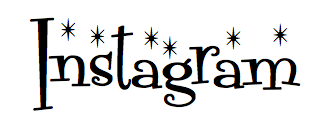
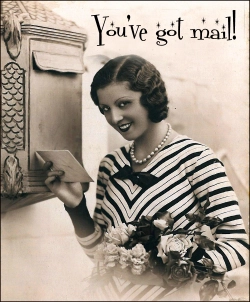


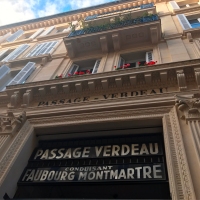
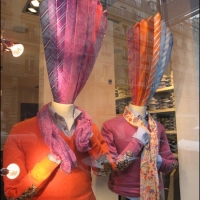
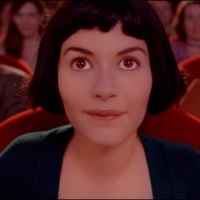
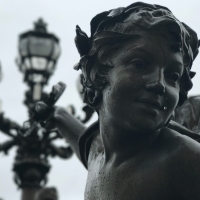
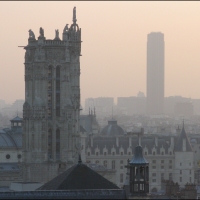
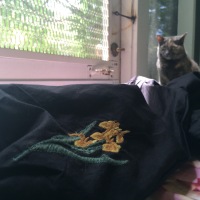

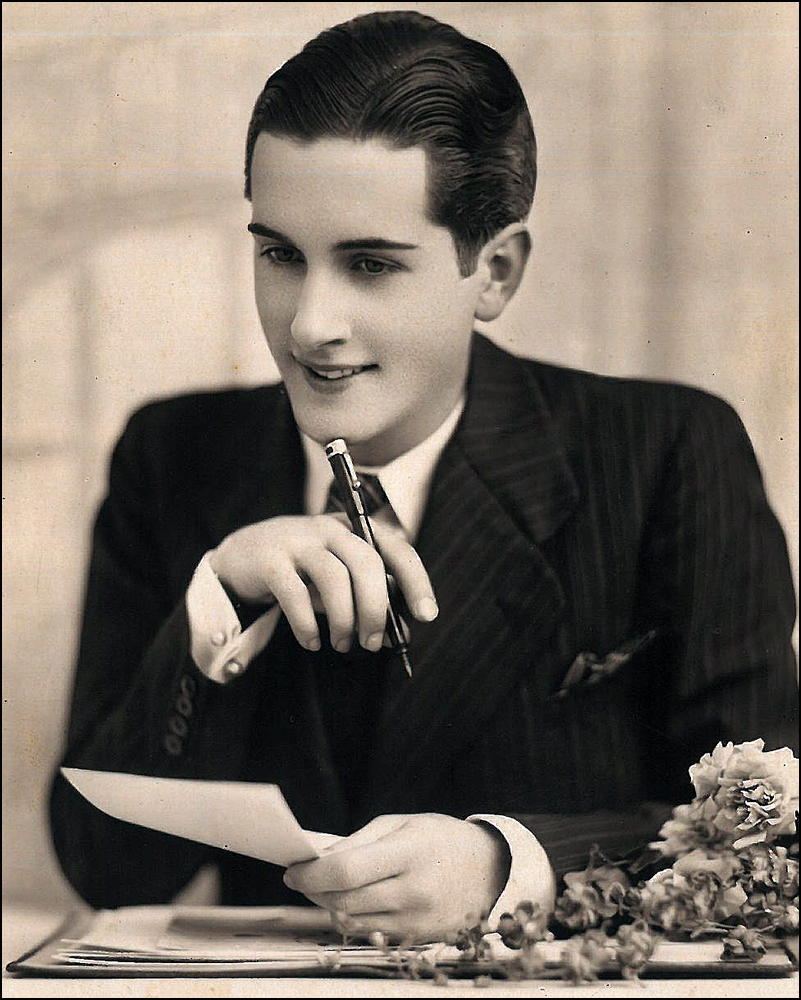

Virginia and I are hiding in the shadows of the flying buttresses with a bottle of champagne, giggling and our glasses clinking wildly as we listen to the new bells and watch Theadora dashing back and forth looking for those ruby slippers of Virginia! What fun ………..oh there she goes again…giggle…giggle…..giggle…..must take another sip……oooooo the bells so beautiful. Perhaps it is time to call out and have Theadora come sit with us, she does look like a glass of bubbly would do her good.
LikeLike
Ring-a-ding-ding. It’s true. “I’m late! I’m late! For a very important date! No time to say “Bonjour, Bonjour!” I’m late, I’m late, I’m late!” is what I said to Quasimodo and Esmeralda. High and low, I looked for you and Virginia. I could hear the giggles and the singing, too, I do believe. And the wild clinking drove me quite mad. But now I’ve found you! And YES. I’d love a sip of bubbly, kind Tinny! T.
LikeLike
That is one wonderful post!
LikeLike
AH, Merci. It was an interesting post to create. Tears were shed. I love studying the old song sheets. The words are moving. The covers are always stunning, really. I’ve got a new obsession, I’m afraid! T. (Enjoy the weekend! It’s nice to see your Tampa photographs again! Gorgeous. Gorgeous.)
LikeLike
I love seeing those old music sheets and advertisements. What a wonderful post you made!
LikeLike
🙂
LikeLike
Last time I was in the area I stayed in a lovely hotel called The Muguet….the room was so small I had to sleep standing up.
LikeLike
The Muguet! Is this the Muguet in the 7th arrondissement near the Eiffel Tower? What a cute hotel! YES. Great location. Hotels in Paris are usually very tiny. Did you enjoy your stay? T.
LikeLike
Those heartbreaking posters and your glorious shots of Notre Dame (that first one is dazzling!) but hats off to Quasimodo feeling affection for his bells returning!
LikeLike
Thank you, Patti! I remember the night I shot the Notre Dame shot. It was cold. The sky was clear. I was on my way to meet friends at the nearby wine bar, 5ème CRU Cave à Vin . What a lovely night!
Here’s another nod to our friend Quasimodo. I do love the names of the bells!
“Go on! Go on, Gabrielle!” he said, “Pour all your music into the square. Today’s a feast day. Thibauld, don’t be lazy. You’re slowing down! Go, go on! Are you becoming rusty, loafer? That’s it. Quick! Quick! Don’t let the clapper be seen. Make them all deaf like me. That’s it, bravo! Thibauld! Guillaume! Guillaume! You’re the biggest, but Pasquier’s the smallest, and Pasquier swings better than you! Those who can hear, I’ll wager you, hear him better than you! Well done!
LikeLike
Too many decades ago when I did a student summer in Paris I lived in a foyer on Ile St. Louis and walked by Notre Dame every day on my way to classes at the Sorbonne You’ve just given me a memory shot– so lovely, thanks! Wish I could hear that organ.
LikeLike
Ah, lucky you! Lucky you. What fabulous location. I never, ever grow tired of strolling past Notre Dame—with my camera in hand, of course! While living on lle St. Louis, did you often pop by Shakespeare & Co. bookshop? Another slice of heaven! T. (Saint-Sulpice also has a wonderful organ!)
LikeLike
That’s a lot of years ago (41 I think).. I don’t really remember the bookshop but for some reason my main memories of the island are the foyer dining room (the French girls taught me how to splay open a piece of baguette and slather it with butter and jam (oh to be 20 and unafraid of fat and cholesterol…) and the walk by Notre Dame… And just how charming everything was on St. Louis. In some ways I think was too young to fully appreciate it.
LikeLike
“The French girls taught me how to splay open a piece of baguette and slather it with butter and jam.” Great line. Great memory! (Salted butter is now my best friend forever. Sigh!)
LikeLike
As always another wonderful post. Time for me to book another trip to Paris…
LikeLike
Well, thank you!
I’m now obsessed with bells! Someday I’d love to visit Fonderie Paccard (the oldest bell foundry in France). It’s now on my wish-list. Created in 1796, they cast St. Patrick’s Cathedral’s bells in New York City and the bells of Sacré Coeur. (I think the ones at Sacré Coeur are the largest.)
Enjoy the weekend!
T.
LikeLike
In that case you’d enjoy my post on the Whitechapel Bell Foundry (see http://londonunveiled.com/2012/08/14/bellfoundry/ ) – a to-do for your next trip to London.
LikeLike
I thoroughly enjoyed your post about the Whitechapel Bell Foundry! I am adding it to my must-visit list! I also loved your photographs. Thanks for sharing the link. (I love the Whitechapel Art Gallery. Beautiful space. A few years ago, I got to see the “Inner Worlds Outside” exhibition. Wonderful. Wonderful. So one could very well visit both spots. The gallery is about a 3 minute walk from the bell foundry.
Clipping from your post: “Whitechapel’s famous bells include the original Liberty Bell (1752), the Great Bell of Montreal and, probably best known of all, Big Ben at the Palace of Westminster. Cast in 1858, this is the largest bell ever cast at Whitechapel, weighing 13½ tons.”
Great Bell “Big Ben” first chimed in 1859. It took 18 hours to pull the 13 1/2-ton bell up to the Clock Tower’s belfry. Interesting!
Thanks ringing in more bell tidbits!
T.
LikeLike
Stunning photos, as usual!
LikeLike
Ah, thank you, Kim! Have a lovely weekend!
T.
LikeLike
Just opened my window and if I listen really well I swear I can hear those bells from way across the channel…..or maybe it’s because you describe it so well I feel like I am there! Lovely post of your fabulous city..as always! Thank you xx
LikeLike
Ah, what a lovely passage!! Thank YOU. Have you seen the “Amelie” film (2001)? The film was shot in Abbesses. Throughout the film, the bells of Saint-Jean in Abbesses sing! It’s worth watching the film just for the sound of the bells!
T.
(My name is Theadora. And I’m now obsessed, obsessed with bells!)
LikeLike
Oh Amelie is one of my favourite movies…..my name is Julie and I am a Paris addict!!
LikeLike
🙂
LikeLike
A brilliant collection of photos, posters, words, feelings … classic Theadora!
LikeLike
Merci, Patricia!! And thank you for the super swell shout-out! I will make my way to the party tomorrow. Je promets! What a fabulous line-up of Paris and France-related sites. I’m looking forward to exploring each one. Apologies for the delay. Yikes. It was busy week! T. (Enjoy the weekend! And as always, thanks for your thoughtful words!)
LikeLike
Clearly you do a lot of research before you write a post. What fun it must be to do all of the research and compile your thoughts with each of your themes. I always learn something new from you about Paris! I didn’t realize Theodora Morse was behind that iconic lyric. Take Care, Thea
LikeLike
Thanks, Thea! I do enjoy the research. Sometimes it’s difficult to STOP and hit the “publish” button. I’m sure you’ve been there. You spend a great deal of time with your posts. I can tell!
And YES. Theodora Morse! Theodora Morse was married to fellow songwriter, Theodore Morse. Funny, eh? They were one of the first Tin Pan Alley husband and wife team. Theodora also used the name: Dorothy Terriss. I’ll try to dig up more of her work.
Again, merci! And enjoy the weekend!
T.
LikeLike
I do spend a lot of time on my posts but have a lot of fun doing so. Do you start with the idea, theme, images or content first? I start with the idea, create, images and then match the the text to the images. If the post is getting too long (I tend to be wordy) I break it into more than one and make it into a series. That is sooo interesting about the songwriting team. I now will have a heightened awareness when every I hear that genre of music! Have a great weekend, Thea
LikeLike
Well, your posts shine, Thea! Do I start with the idea, theme, or images ? It depends with the post. My inspiration varies! Sometimes an image will spark an idea. Other times it’s the theme that sizzles. Have a productive writing week! T. (I’m currently cooking up a post on Paris street art.)
LikeLike
Looking forward to it! ~Thea
LikeLike
Such an amazing post and posters, Mary Earl’s Song gem is my favorite! 🙂 but I really love the all!!
LikeLike
I also love the “My Sweetheart is Somewhere in France” sheet. The illustration is pretty darn wonderful. By the way, William Starmer and Frederick Starmer also created the cover of “Somewhere in France is the Lily.” Another beauty!
Here are a few of Mary Earl’s verses:
I’ve a letter from my sweetheart,
And he writes me in this way,
“Somewhere, dear, in France we’re fighting,
But just where we dare not say,
Be brave and do night sigh,
And I will come back bye and bye”
My sweetheart is far across the ocean,
My sweetheart is somewhere in France,
When he whispered “Goodbye,” I tried not to cry,
Because he said I’m taking a soldier’s chance,
Could I see him, I’d tell him that I love him,
And I’d put all my heart in one fond glance,
Every night I say a prayer For the boy who’s over there,
My sweetheart is somewhere in France,
My sweetheart is somewhere in France
LikeLike
Ah, thanks for the extra detail, I’m such a sucker for the words that contextualize the images!! Love your posts and the care in your responses!!
LikeLike
Here’s another extra detail on Mary Earl: According to the Parlor Song Academy and Columbus Ohio’s Columbus Senior Musicians Hall of Fame, “Mary Earl” was a pen name for Robert “Bobo” King. For years, “Bobo” King worked with music publisher Leo Feist. Interesting. Tin Pan Alley was a small world.
Also, thank you for always leaving such thoughtful words! And have a creative week. I’m already looking forward to curated collection of photographs. They inspire, I tell you! T.
LikeLike
Small world indeed!! Now that’s exactly why I still want journalists and journalism in my life. Some subjects require actual research effort and writing skill beyond a vapid-off-the-cuff-140-character opinion 🙂 Thank you!!
And thank you especially for your kind words about my still earth! 🙂 MS
LikeLike
I love Paris 🙂
LikeLike
And I LOVE your smiley faces! 🙂 🙂 (Have a wonderful weekend!)
LikeLike
A wonderful journey, as ever, magnificent original pictures: a perfect post dear Theadora 🙂 ~~~ et quelle ville!
LikeLike
Merci, Sir! Say, I just spotted your nod to Stanley Kubrick’s “Paths of Glory” 1957 film. What a film. Kirk Douglas was amazing. Amazing. I’m getting all teary just thinking about it. What a great blog prompt. I plan to participate! T. (As always, thanks for your kind words!)
LikeLike
What beautiful graphic design – this style is surely due a resergence. Great photographs again, T! Love number three – it fits the Hugo quote very nicely. I wonder how many people sang Feist’s songs at home.
LikeLike
Thanks, Richard! The music sheets illustrations are gorgeous! And large. Prior to 1918, they were 11 x 14 inches. After WWI, they were reduced to 9 x 12 inches (probably to fit in the brand-spanking-new piano benches. During WWI, they were still using piano stools. At the time, pianos held court in the parlors!
Here’s more Feist copy: “Get these four smashing song hits for your piano, your talking-machine, or your player-piano—and get them right away! The very next time you go to a cabaret, dance hall, or other place where there is music, request the leader to play these four songs that the soldiers and sailors sing and love!”
LikeLike
I’ve timed it Tin Man. Every fifteen minutes those glorious bells ring out , so if you are going to serenade Theadora and me you have to be quick off the mark. We’ll drink bubbly during the bells and then listen to your rendition of Goodbye Broadway Hello France. By the by, do you know Lily Marlane or How about The Caissons Go Rolling Along?
LikeLike
YES. The bells ring every fifteen minutes, Monsieur Tin Man! Wonderful, wonderful choices, Virginia. What to sing? A love song or a marching song? Both have interesting backgrounds. I found the “The Caissons Go Rolling Along” lyrics. They think it was written in 1908 by Edmund L. Gruber, William Bryden, and Robert Danford and then published in 1921 by Shapiro, Bernstein & Co. And then it was rearranged in 1917 by John Philip Sousa. “The March King” wrote 136 marches. (Including the “Stars and Stripes Forever.”) He also wrote operettas! Interesting. Merci, Virginia!
We will hit the dusty trail,
And those Caissons go rolling along.
Up and down, in and out,
Counter march and left about,
And those Caissons go rolling along,
For it’s high high he,
In the Field Artillery,
Shout out your “No” loud and strong,
For wher-e’er we go,
You will always know,
That those Caissons go rolling along.
LikeLike
Underneath the lantern
By the barrack gate
Darling I remember
The way you used to wait
‘Twas there that you whispered tenderly
That you loved me
You’d always be
My Lili of the lamplight
My own Lili Marlene
Time would come for roll call
Time for us to part
Darling I’d caress you
And press you to my heart
And there neath that far off lantern light
I’d hold you tight
We’d kiss good night
My Lili of the lamplight
My own Lili Marlene
Orders came for sailing
Somewhere over there
All confined to barracks
‘Twas more than I could bear
I knew you were waiting in the street
I heard your feet
But could not meet
My Lili of the lamplight
My own Lili Marlene
Resting in our billet
Just behind the line
Even though we’re parted
Your lips are close to mine
You wait where that lantern softly gleamed
Your sweet face seems
To haunt my dreams
My Lili of the lamplight
My own Lili Marlene
My Lili of the lamplight
My own Lili Marlene.
I listen to the scratchy recording by the most marvelous, delicious, Marlene Dietrich at least once a week. Of course my recording is in German……….oh, the three of use arm in arm walking the side streets of Paris in the evening fog……..delight! I toast you my darlings, Virginia and Theadora!
LikeLike
I toast you, Tin Man! Thanks for digging up the lyrics! It’s such a beautiful song. I’ll try to find the music sheet. I’m sure the cover is a looker. And YES. I love Marlene Dietrich’s version. Gorgeous. Gorgeous. In fact, I am listening to it now. (For the love of Lola-Lola, it’s time to watch Josef von Sternberg’s “The Blue Angel” again, I do believe Marlene was magnificent in this film!)
T.
Here are a few of verses in German:
Vor der Kaserne
Vor dem grossen
Tor Stand eine Laterne
Und steht sie noch davor
So woll’n wir uns da wieder seh’n
Bei der Laterne wollen wir steh’n
Wie einst Lili Marleen.
Unsere beide Schatten
Sah’n wie einer aus
Dass wir so lieb uns hatten
Das sah man gleich daraus
Und alle Leute soll’n es seh’n
Wenn wir bei der Laterne steh’n
Wie einst Lili Marleen.
LikeLike
Your posts stand out above the rest- always! and thanks for stopping by my “layers” this week and clicking that trusty “like” button. I’ve shared your post via Twitter and FB and an email to my friend the French professor.
LikeLike
Merci, Ruth!! Thanks for helping me spread the word. I appreciate it. AND by the way, I LOVED your ab-fab “layers” shot. It caught my eye. It reminded me of candy! T.
LikeLike
Wonderful post and the illustrations are magnifique!
LikeLike
Thank you, Meg! It was an interesting post to create. And now, thanks to Virginia and the Tin Man, I haven’t been able to stop singing Marlene Dietrich’s version of “Lili Marlene.” Not that I’m trying! T. (Have a fabulous week!)
LikeLike
I’ve always loved the sound of bells, and these stories are really touching ! The “Souvenir de France” is a poignant photo, because, without the Americans, who knows what France would be now ? Even if France is my home country, America is my heart country ! X
LikeLike
What thoughtful words! I found the “Souvenir de France” pillow case cover at a little consignment shop in New York. It’s tattered. Torn. And well-loved. Then and now.
I keep colliding with bell stories. Over the weekend, I stumbled across a wonderful bell mention in writer Anaïs Nin’s diary. While she was getting a facial at the Elizabeth Arden Salon on Fifth Avenue in New York, she could hear the bells of the Fifth Avenue Presbyterian Church. She wrote: “The church bells are ringing while I sit at Elizabeth Arden’s on Fifth Avenue with my face covered by a mask, and I almost come near God again.”
Enjoy your week!
T.
LikeLike
Wonderful – great sheet music – tells a whole story.
LikeLike
Thank you!! Stay tuned for a Sheet Music Part II! The art is magnificent! Here’s a sampling of the titles: Irving Berlin’s “Call Me Up Some Rainy Afternoon,” Geo. Little and Art Sizemore’s “So Tired,” and Georges Auric and William Engvick’s Moulin Rouge hit “Where is Your Heart.” Oh, la la! T.
LikeLike
A wonderful memory… my father always sang Lili Marlene. As a child I leaned the words and sang along with him.
LikeLike
Sweet story, Thom! I love it. Do you still have tune memorized? For inspiration, I’ve been spinning Marlene Dietrich’s version. T.
LikeLike
Unfortunately, not all of them…ut Ifakeit real well. Now I have a copy of the words (from your blog) so maybe I will start rehearsing
LikeLike
For a brief moment there, I thought you meant Edgar Allan Poe’s piece. I guess not!
LikeLike
Oh, YES. Edgar Allan Poe’s “Bells” inspired the title of the post! Here’s a snippet:
How it swells!
How it dwells
On the Future! how it tells
Of the rapture that impels
To the swinging and the ringing
Of the bells, bells, bells,
Of the bells, bells, bells, bells,
Bells, bells, bells—
To the rhyming and the chiming of the bells!
LikeLike
Hahaha! Love his work. Apt too for your post! Thanks, Thea. Always a great visit to drop by your blog. I walk away feeling very Parisienne!
LikeLike
Ah, thanks! I agree! I’m also a Poe fanatic. When I lived in Baltimore, I’d often pay homage and visit his grave site and former digs on Amity Street! T.
LikeLike
Ahh, T, I always enjoy coming here and this time I reveled in the bell immersion. Love the sheet music, too. And since I had time to read through comments, I learned even more. I’ve been behind on reading posts but thought of you this morning, as I did one last farmers market post for the season today, so I scurried back through my emails so I could read your post. So glad I did!!
Hope you’re having a wonderful Tuesday!
janet
LikeLike
Janet, I just spotted your Farmers Market Post! I loved the close-up shots of the autumn produce. Especially the top shot of the ruby red radishes! What kind of apples did you score?
T.
(And thanks for your sweet words!)
LikeLike
Beautiful photos and fun artwork.
LikeLike
Well, thank you!
T.
(And I’ve been enjoying your artwork. You’re in a creative zone. Enjoy the weekend!)
LikeLike
Great post, full of information beautifully put, that carried me onto the previous macabre but, somehow, romantic post.
LikeLike
Thanks for such thoughtful words, as always! I appreciate it. It was an interesting post to create. Folks are still passionate about their bells. This year, the lines at Notre Dame were very long! T.
LikeLike
First off, I’m amazed how well you were able to link these seemingly incongruous subjects (veterans and Notre Dame’s bells)! You’re a true artist, Theadora! As for the bells, I hope you don’t mind my linking a post in the comments, but in February I posted a “family photo” of many of the bells you named here. If you’re interested, it’s at: http://parisbycellphone.com/2013/02/23/2013-02-23-special-saturday-bells-of-notre-dame-paris/
LikeLike
Good. Golly! Thanks for the kind words, along with the link to your photographs of the bells. What gorgeous portraits of the Notre Dame Bell Family. I also love the crowd shots. Lovely! Lovely! Quasimodo would have approved! I’m going to add your link to bottom of the story. Thanks so much, Paul! T.
LikeLike
Thank you so much for the link, T!
LikeLike
It’s taken some time for me to extoll the brilliance of your “bells bells bells.” (Read: technical difficulties with various devices. Errr.) Was Fiest American or a Brit? I never stopped to think who wrote those songs.
Your photos are always divine as well as your “flea market finds.” Are they the source of those spiffy album covers. I love that cover for “My Sweetheart is somewhere in France.”: The woman’s skirt reminds me of this killer Marimekko pattern from the 60s or 70s.
The quote about the historic attachment of people and their bells really got me thinking. What is it about bells? I have bells on the screen door, a bell hanging from my rear-view mirror and–in my younger 20s–in my nappy curls. Every time I turned my head there’d be a little jingle. I remember silencing a crying baby on a plane by tugging on that lock of hair. The look of fascination I got! [Yes, I had to spend the rest of the flight jangling to keep baby amused.]
I’m still trying to figure out why I love having every timbre, pitch and shape of bells surrounding me. I’d probably still wear them on my person if it didn’t drive the general public insane.
LikeLike
YES. The skirt on the cover of the “My Sweetheart” does resemble a Marimekko pattern! Great eye! And ear. I loved, loved your bell stories. Of course, you would don bells in your ringlets! Another tiara! Imagine a tiara made of bells? Have you seen such a critter? And speaking of flea market finds, I just scored a very large 18th century portrait of a cat, wearing a bell. Belling the cat just got easier. The frame is incredible. I’ll post it soon.
And speaking of bells, let’s not forget to mention the Marie Antoinette soundtrack. As you know, the sound of bells ringing kicks off the track. “Versailles Intro” is the title. It’s short. But a beauty!
Heck, keep on wearing your bells!
T.
LikeLike
C’est vrai! It’s in the coronation scene–right after rather–as the royal pair descends those royal blue stairs with the fleur de lys pattern. Love the dress and the killer aigrette she’s rocking.
LikeLike
Marie Antoinette in blue + Plain Song by the Cure = PERFECTION. (Headed to Rome on work trip. I’ll report back with the tiara low down. Je promets.)
LikeLike
Your posts manage to weave wonderful facts, trivia and humour into one gorgeous shawl I want to wrap myself up in – for that
Across the Bored has nominated you for a Versatile Blogger Award at http://acrossthebored.com/2013/11/26/two-cents-tuesday-challenge-writing-week-2/. If you choose to accept, feel free to pass it along to other deserving bloggers! If not, know that your blog is well appreciated and a source of inspiration for us.
LikeLike
Ah, thank you for the gorgeous words! A shawl? I love it. And as you know, I also love your “Across the Bored” description: “Old enough to rant, too old to rave yet sufficiently young to forge a path into the future.” Perfection. Thank you for your inspiring shawls! T.
LikeLike
Hello Theadora…I just remembered this song because of one of the pics seen here….
LikeLike
There are so many interesting, funny things here that I don’t know what to say. 🙂 I had no idea that bells fade over time or that there were so many bells in Notre Dame. Amazing too that it’s been around for 850 years. The whole idea of a singing army makes me feel very nostalgic for that time period.
LikeLike
Happy New Year, Thea!
LikeLike